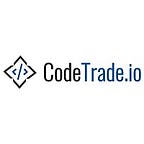Build Efficient Flutter Apps with MobX: A Practical Guide
Flutter has taken the mobile app development world by storm with its hot-reload functionality, rich widgets, and ability to build beautiful apps for both iOS and Android with a single codebase. But as your Flutter apps become complex, managing the application state becomes challenging.
Flutter has many state management libraries that are useful for creating creative UIs in Flutter applications. In this discussion, we will delve into the details of the MobX State Management library in Flutter.
MobX is a reactive state management solution for Flutter that simplifies the process of keeping your UI in sync with your app’s data. Let’s explore how the MobX state management library builds efficient and scalable Flutter applications.
What is MobX?
MobX is a lightweight state management library for Dart that uses observables to update UI widgets whenever the underlying data changes automatically. This eliminates the need for manual state management and boilerplate code, leading to cleaner and more maintainable applications.
Advantages of MobX State Management Library
- Simplified State Management: MobX removes the complexity of manually managing the application state and allows you to focus on building your app’s functionality.
- Improved Code Readability: With MobX state management library, your code becomes more readable and easier to understand as the state updates are handled declaratively.
- Faster Development: The reactive nature of MobX speeds up development by automatically updating UI widgets whenever the data changes.
- Better Testability: MobX’s isolated state management makes unit testing your Flutter app a breeze.
Disadvantages of MobX State Management Library
- Can introduce additional overhead compared to simpler solutions.
- Might require a shift in mindset for developers not familiar with reactive programming.
How MobX Library Works
Let’s create a simple counter app using MobX to demonstrate these concepts:
Step 1: Define the Base Counter Class with MobX Annotations
class Counter = _Counter with _$Counter;
abstract class _Counter with Store {
@observable
int value = 0;
@action
void increment() {
value++;
}
}Step 2: Generate MobX Observables and Actions using Mixin
mixin _$Counter on _Counter, Store {
late final _$valueAtom = Atom(name: '_Counter.value', context: context);
@override
int get value {
_$valueAtom.reportRead();
return super.value;
}
@override
set value(int value) {
_$valueAtom.reportWrite(value, super.value, () {
super.value = value;
});
}
late final _$_CounterActionController =
ActionController(name: '_Counter', context: context);
@override
void increment() {
final _$actionInfo =
_$_CounterActionController.startAction(name: '_Counter.increment');
try {
return super.increment();
} finally {
_$_CounterActionController.endAction(_$actionInfo);
}
}
@override
String toString() {
return '''
value: ${value}
''';
}
}
mixin _$Counter on _Counter, Store {
late final _$valueAtom = Atom(name: '_Counter.value', context: context);
@override
int get value {
_$valueAtom.reportRead();
return super.value;
}
@override
set value(int value) {
_$valueAtom.reportWrite(value, super.value, () {
super.value = value;
});
}
late final _$_CounterActionController =
ActionController(name: '_Counter', context: context);
@override
void increment() {
final _$actionInfo =
_$_CounterActionController.startAction(name: '_Counter.increment');
try {
return super.increment();
} finally {
_$_CounterActionController.endAction(_$actionInfo);
}
}
@override
String toString() {
return '''
value: ${value}
''';
}
}Step 3. Create the Counter Example State and UI with MobX Integration
class CounterExampleState extends State<CounterExample> {
final Counter counter = Counter();
@override
Widget build(BuildContext context) => Scaffold(
appBar: AppBar(
backgroundColor: Colors.blue,
title: const Text('MobX Counter'),
),
body: Center(
child: Column(
mainAxisAlignment: MainAxisAlignment.center,
children: <Widget>[
const Text(
'You have pushed the button this many times:',
),
Observer(
builder: (_) => Text(
'${counter.value}',
style: const TextStyle(fontSize: 40),
)
),
],
),
),
floatingActionButton: FloatingActionButton(
onPressed: counter.increment,
tooltip: 'Increment',
child: const Icon(Icons.add),
),
);
}Conclusion
MobX is a powerful tool for managing application state in Flutter. Its reactive nature and ease of use make it a great choice for developers looking to streamline their development process. With the concepts and examples covered in this blog post, you’re on your way to building efficient Flutter apps with MobX.
Follow CodeTrade for valuable insights, or hire dedicated Flutter developers who are prepared to ensure the success of your project.
